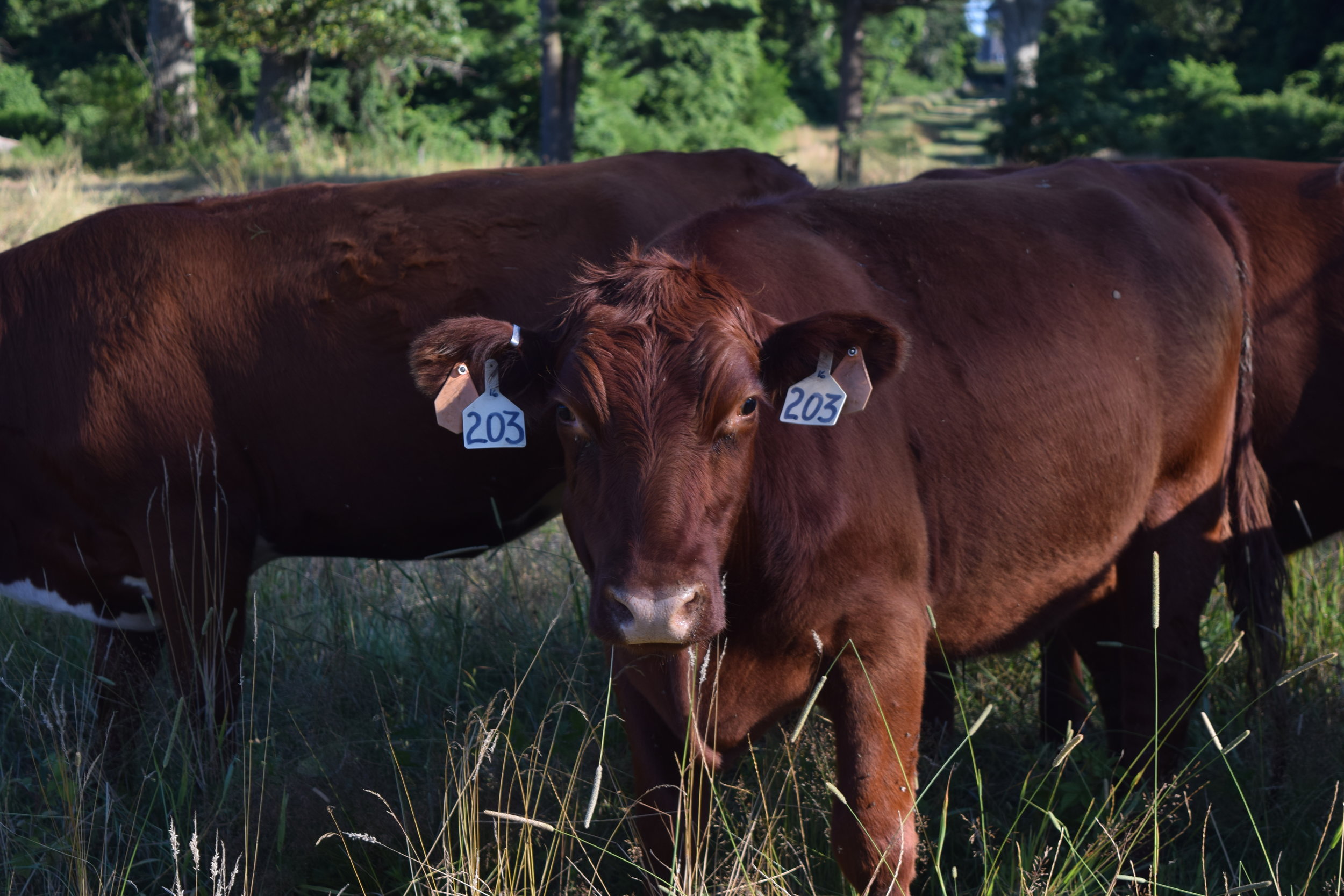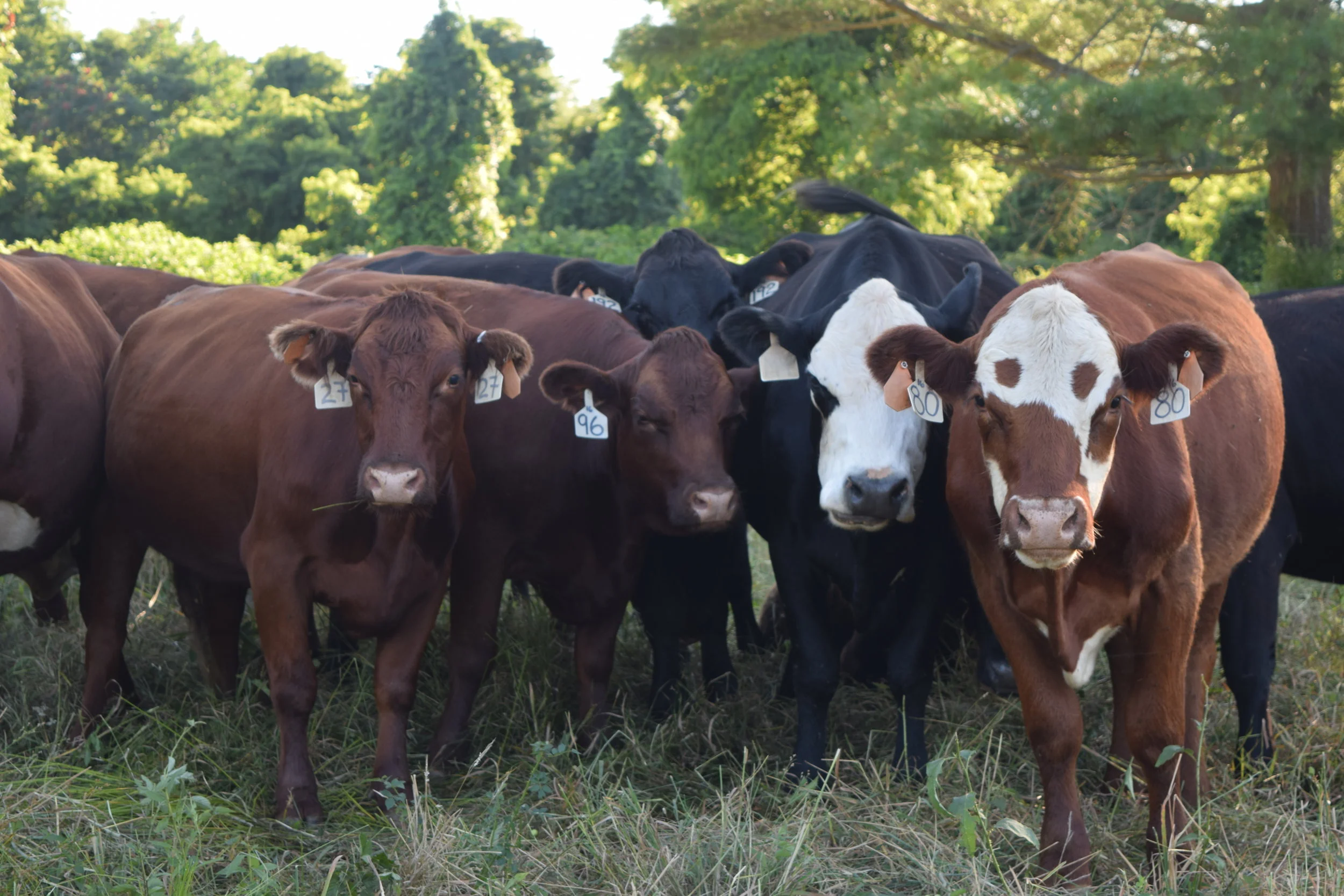Updates from Acabonac Farms + A Discount Code
Last summer, I had the opportunity to visit Acabonac Farms, a grass-finishing cattle farm on the East End of Long Island. Read more about that experience here. This summer, I went back and had the pleasuring of asking a few questions of their bomb-ass female farmer, Cristina. I wanted to offer you a source that once and for all clears up all of the questions around grass-fed vs. finished, why you should be eating grass-finished beef and why Acabonac Farms is such a special place. PLUS they offered my readers a discount code—you can get 15% off their “Metro Box” using the code TEACHEATREPEAT at checkout! How awesome is that?
The following is a series of questions I asked Cristina, and a summary of her answers based on my notes.
The first question I asked Cristina was, “What does grass-fed vs pasture finished really mean?”
Her response: Grass-fed means that the cattle eat grass at some point in their life. It’s an ambiguous term because it doesn’t always mean that the cattle eat 100% grass for their entire lives. All beef in America starts off drinking mother’s milk, and then transitions to eating grass (which is a cow’s natural diet—they are ruminants after all) until they’re close to finishing weight. Then the cattle are finished, at which point they could either be finished on grass or grain (about 90% of cattle in this country). The sneaky part is they could be out on pasture, but finished on grain or finished on grass, but not on pasture. “Pastured” doesn’t always mean for beef as it might for chicken. If you see 100% grass-fed, then that’s a little more reassuring.
Why do we feed cattle grain if it’s not their natural diet?
Grain helps the cattle put on weight quickly for very little money. It takes longer for an animal to reach its finishing weight on a 100% grass diet. For example (and I LOVE this analogy), if you took a teenager and had him sit down and eat nothing but McDonalds and play video games, he would likely gain a lot of weight and get really sick. If you took that same teenager and put him on a soccer field and had him running and fed him salad and animal protein, you’d get a very different teenager.
That said, the finishing process is where the fat, marbling and distinguishing flavor of the beef come in. Grain fed beef tends to have a higher fat content, grass-finished is much leaner. The fat in grain-finished animals doesn’t have as much flavor, so you need more of it to get that juicy umami thing we all love. You get much more flavor for your fat buck from a grass-fed animal.
Why should we be eating grass-fed and finished beef?
Not only does it have more flavor, but it has a superior health profile. It’s higher in omega-3 fatty acids (good for your brain), CLA (good for your belly fat), and higher in Beta Carotene and Vitamin B (good for your energy), and lower in fat and calories than conventionally farmed beef of the same fat %.
What does raising beef on the East End look like?
It’s challenging because we have very sandy soils. All of our properties are un-irrigated. It’s hard to grow grass without irrigation, and with sandy soil. And without grass, we wouldn’t be able to pasture finish our cattle. It’s hard to find large 100+ acre parcels of land on Eastern Long Island so that means we’re kind of spread out. Traditionally, you have all of your property in one place, but because of the way LI has developed in the past 100 years, our properties are spread out so we have to do a lot of logistical planning. There also aren’t any USDA-certified slaughter facilities here so that means we have to bring the animals elsewhere. That said, we think the salt-infused air and sandy soils all contribute to what the terroir of what the beef is. Being close to the salt-water and growing grass in those sandy soils contributes to the unique product we’re able to create.
How is Acabonac Farms different?
Our beef is 100% grass-fed and pasture finished, and we also believe in 100% transparency. That means we like to invite eaters to come see and talk to us about exactly what we’re doing. We only sell our own beef, we’re in the fields every day, rotating the animals to make sure they’re getting enough food, and consistently and increasingly gaining weight. Our dialed-in system of rotational grazing means it’s a little more labor intensive for us but it’s because we want to ensure the cattle have never-ending access to high-quality forage full of all the nutrients they need to make healthy beef for you.
For Acabonac Farms, being transparent is really important. What does that actually mean?
It means that we actually don’t rely on third party certifications because they’re not always up to the standards we enforce upon ourselves. We want our consumers to get to know us, and ask us their questions. We believe in a time when people used to know the producers of their food, and we want to bring farm access back to the American eater.
It’s important to us to be transparent, because we hold ourselves to a really high standard. For example, some beef is labelled as grass fed, but the animals are actually in a feed-lot eating grass pellets, not even hay. It’s like a human being saying she ate a salad today, but really she had a scoop of greens powder in her smoothie. We believe it speaks to the importance of getting to know where your food is coming from and getting to the people who are creating your food.
As we walked back towards the barn, the cows rhythmically munching behind us, a little fox poked his head over the tall, tall grass as if to say, “thanks for coming!”
Long Island is a special place, and Acabonac Farms is representative of a lot of what’s special about it. There are many wonderful small farms left across the United States that are working to return American Farming to the source of health that it once was for the country. I encourage you to find the places in your local community that are doing just that.
If you’re interested in buying beef from Acabonac Farms, they would love your support. You can click here, and use the code TEACHEATREPEAT for 15% off of a metro box!



